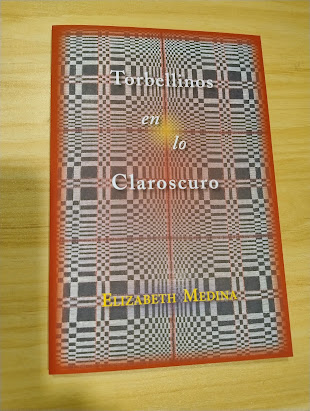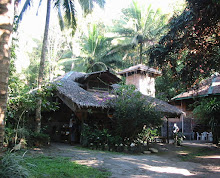WE WON!! Trump DOJ Drops ALL Charges
Against Dr. Kirk Moore After Vaccine Safety Leaders Wage Successful Pressure Campaign
VERO BEACH, Fla - The United States government has dropped all charges against Utah doctor Kirk Moore and his co-defendant Kris Anderson, after a successful pressure campaign involving hundreds of influencers and politicians convinced Attorney General Pam Bondi to intervene on Saturday to stop the trial and multi-year prosecution.
"At my direction the Justice Department has dismissed charges against Dr. Kirk Moore. Dr. Moore gave his patients a choice when the federal government refused to do so. He did not deserve the years in prison he was facing. It ends today,” AG Bondi said in a statement posted to X.
https://twitter.com/AGPamBondi/status/1944081479459369090
https://x.com/DiedSuddenly_/status/1944183503509483853
Dr. Moore was facing up to 35 years in jail for giving his patients fake covid-19 vaccine cards, and agreeing to inject saline shots into the arms of children with parental consent, so they wouldn't have to lie to live normal lives.
“The case is dismissed with prejudice, meaning it's over and cannot be prosecuted again,” Dr. Moore’s attorney David Drake said on Saturday, after being informed that AG Bondi had personally called Acting U.S Attorney for the District of Utah Felice John Viti, ordering the case be dropped.
Judge Howard C. Nielson, Jr. approved the dismissal on Saturday, a necessary step since a jury had already been impaneled and the trial one week underway.
The only caveat is that the offer from the prosecution for dismissal asked for Dr. Moore to not pursue legal fees from the United States government, which has added up to over $750,000 in total, not including the damage to his practice, and the lost time and stress from the almost 4 year ordeal.
You can donate in support of Dr. Moore’s legal bills here: https://www.givesendgo.com/Fight4moore
“The two rallies we had this week and the article written by Died Suddenly obviously had a huge effect on what happened today,” Dr. Moore said in a video posted moments after the announcement.
https://twitter.com/alayna_raddon/status/1944090936482705546
"We have justice here, and I thank God for that blessing, but there are so many people who have died and been hurt from this who do not have justice right now, so the fight has just begun," Matt Skow, Director of Died Suddenly said of the decision.
“This victory shows that the voice of the people still matters in America, an innocent man and woman now walk free, vindicated for their righteous stand against tyranny,” Edward Szall, producer for the Died Suddenly team, commented about the ruling.”God raised-up a grand alliance, that were key to getting the word out, and enlisting support for the cause. Thank you everyone for your sacrifices!”
On behalf of Dr. Moore, his family, and the family of Kris Anderson, the Died Suddenly team would like to extend a special thank you to Teena Porter Horlacher, Robert Scott Bell and his family, Jason Preston and WeAreThePeople Utah, Shannon Joy, Dr. Mary Talley Bowden, Stephanie Lind, Dr. Theresa Long, Charlene and Ty Bollinger, Karen Kingston, Samantha and Alexis Lorenze, Terry and K Ross Johnson, Gary and Angela Franchi, Joey and Ada Mannarino, Jake Lang, Enrique Tario, Fior Hernandez, Brandon Straka, Josh Twigg, the teams behind Infowars, Gateway Pundit, and Zerohedge, Cara Castronuova, Sally and James, Noel Fritsch and National File, Kristi Leigh, Dr. Paul Barattiero, Milo Yiannopoulos, Dom Lucre, Ike Wingate, Dr. Edward Group, Maria Crisler, Congresswomen Nancy Mace, Dr. Gene Posca, Mara Macie, Natalie Clawson, Richard Hirschman, Ella Maulding, Elijah Schaefer and RiftTV, Braeden Sorbo, Sarah Stocks, Brenda Fochtman, Lara Logan, Kai S, Thomas Carrigan, Jake Hoffman, Maria Crisler, Defend the Republic, Mindy Robinson, Mark Anthony, Mimi, Doc Malik, Dr. Sherri Tenpenny, Ann Vandersteel, Dr. Jane Ruby, Steve Kirsch, Dr. Peter McCollough, Joe Bannister, Erin Elizabeth, Gina Bontempo, Shawn Hendrix, Kandiss Taylor, Sharyl Attkisson, Dr. Stella Emmanuel, Vanessa Broussard, Dr. Pete Chambers, Senator Wendy Rogers, Debbie Dobbs, George Santos, Leo Zacky, Tom Renz, Alex Stone, Dr. Margaret Aranda Ferrante, Bob Biermann, Phil Lyman, Pete Santilli, Kyle Clifton, Ivan Raiklin, Candace Owens, Andrew Torba, Dr. Kevin Stillwagon, Alana Newman, JD Rucker, Mark Vargas, Anna Khait, Clinton Ohlers, Michael Yon, Pastor Todd Coconato, Trevor Shipman, Rhett Palmer, Vem Miller, Matthew Rife, Heather Clement, Maria Zeee, Josh Phillips and Epoch Times, Jeremy Harrell and LFA TV, Shawn Farash, Sam Terminal CWO, and all the other countless people who spent their July 4th weekend and summer retweeting, sharing, and advocating for this victory. It would not have been possible without your help and dedication.
https://twitter.com/MdBreathe/status/1944400420744437847





.jpeg)
.jpeg)

.jpeg)



.jpeg)





.jpeg)
.jpeg)




.jpeg)
